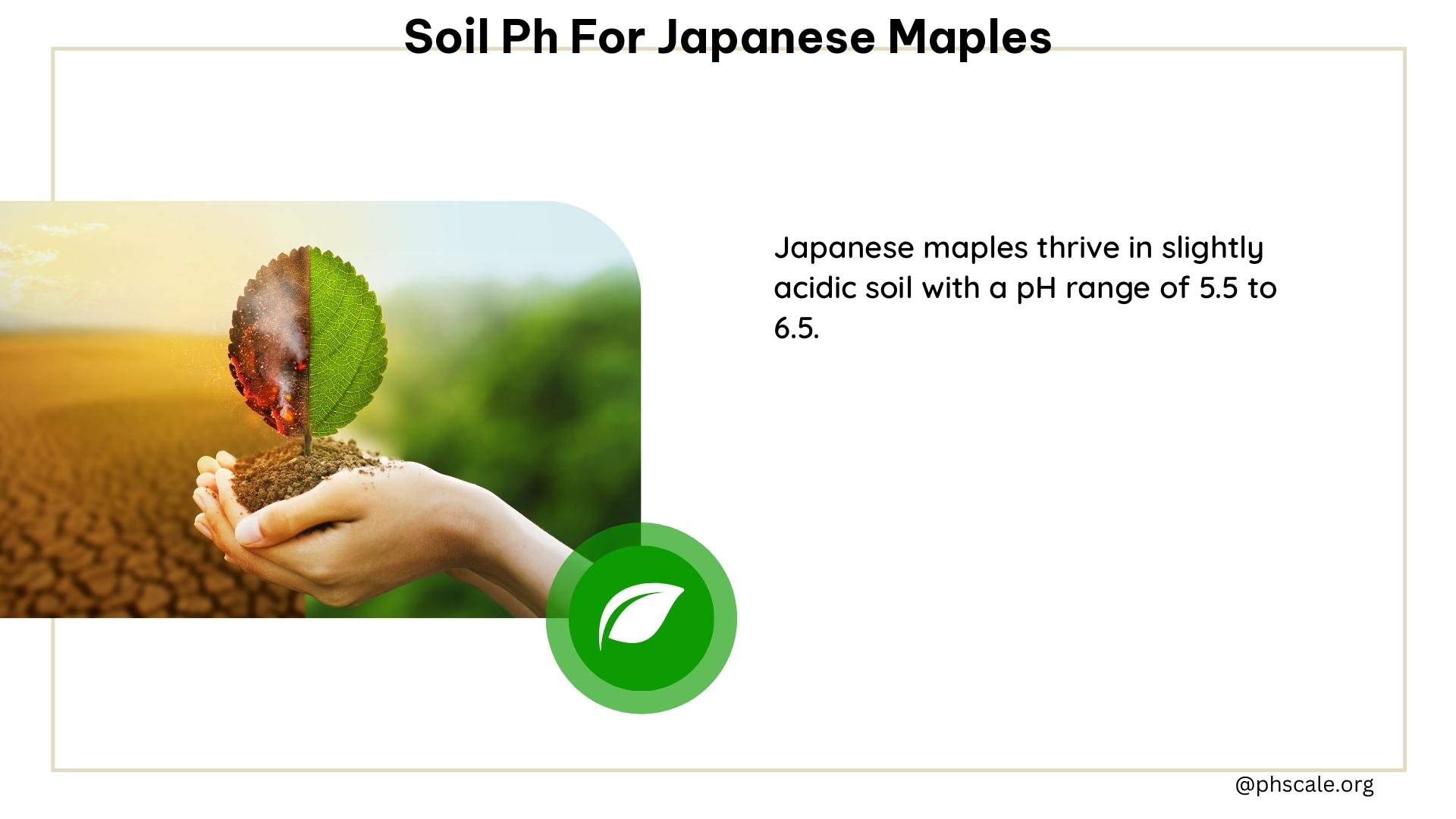The ideal pH range for Japanese maple trees is slightly acidic to neutral, typically between 5.5 and 6.5. This range allows for optimal nutrient absorption and reduces the risk of nutrient deficiencies, ensuring the vibrant and healthy growth of these stunning ornamental trees.
Ideal pH Range
Japanese maples thrive in a soil pH range of 5.5 to 6.5. This slightly acidic to neutral condition enhances nutrient availability, mineral solubility, and microbial activity, all of which are crucial for the tree’s root development and overall function.
Effects of Alkaline Soil

When the soil pH rises above the ideal range, typically above 7.5, it can lead to several problems for Japanese maples:
- Nutrient Deficiencies: High alkaline soil conditions can make certain minerals less available to the tree, resulting in nutrient deficiencies that can manifest as discolored or stunted foliage.
- Root Rot: Alkaline soils can create an environment that is conducive to root rot diseases, such as Phytophthora root rot, which can be fatal to Japanese maples.
- Leaf Scorch: Even when the soil is kept moist, high alkaline conditions can cause the leaves to scorch, leading to a decline in the tree’s overall health.
Adjusting Soil pH
To ensure your Japanese maple thrives, it’s essential to maintain the ideal soil pH range. Here’s how you can adjust the pH:
- Soil Testing: Begin by performing a soil test to determine the current pH of your soil. This will help you understand the necessary adjustments.
- Organic Matter: Incorporate organic matter, such as peat moss, compost, or well-rotted manure, into the soil around the tree’s dripline. This will help lower the pH over time.
- Sulfur: Apply sulfur around the dripline of your Japanese maple annually to maintain the acidic soil conditions.
Additional Tips for Healthy Japanese Maples
Aside from soil pH, there are other important factors to consider for the optimal growth of Japanese maples:
- Planting: Plant your Japanese maple in well-draining soil with a mix of organic matter, ensuring the graft is at ground level or slightly above.
- Fertilization: Fertilize your tree once a year in early spring with an acid-type fertilizer, but be careful not to over-fertilize, as this can lead to weak growth.
- Protection: Provide your Japanese maple with protection from high winds and full sun, and mulch around the base to regulate moisture and keep the roots cool.
Contaminants and Chemicals
While soil pH is crucial, there are other factors that can impact the health of your Japanese maple:
- Salt Buildup: Excess salt buildup in the soil can burn the roots of Japanese maples. Mix in gypsum to absorb salts and top-dress with gypsum to counteract this effect.
- Fungal Diseases: Fungal diseases like verticillium wilt can cause wilting or dieback of branches. Ensure good drainage and avoid overwatering to prevent these diseases.
Home Remedies
To maintain the ideal soil pH and overall health of your Japanese maple, consider these home remedies:
- Compost: Use compost to improve soil structure and fertility, which can help maintain a healthy pH range.
- Mulching: Mulch around the base of the tree to regulate moisture and keep the roots cool, reducing stress from high temperatures.
History of Japanese Maples
Japanese maples have a rich history, having been cultivated for centuries in their native Japan. With over 300 varieties available today, these stunning ornamental trees were introduced to the West in the 1600s, captivating gardeners and landscape designers worldwide.
Helpful pH Quantity to Consume
The ideal pH range for Japanese maples is between 5.5 and 6.5. This slightly acidic to neutral soil condition allows for optimal nutrient absorption and reduces the risk of nutrient deficiencies, ensuring the vibrant and healthy growth of these beautiful trees.
Balancing pH
To maintain the ideal pH range for your Japanese maple, consider the following:
- Soil Amendments: Use organic matter and sulfur to adjust the pH of your soil to the ideal range for Japanese maples.
- Monitoring: Regularly monitor your soil pH to ensure it remains within the ideal range and make adjustments as needed.
By understanding the importance of soil pH and implementing the necessary adjustments, you can create the perfect growing conditions for your Japanese maples, allowing them to thrive and showcase their stunning foliage for years to come.
References
- Bright Lane Gardens. (2023). The Best Type Of Soil For Growing Japanese Maples. Retrieved from https://brightlanegardens.com/the-best-type-of-soil-for-growing-japanese-maples/
- Millcreek Gardens. (n.d.). Japanese Maple Care. Retrieved from https://millcreekgardens.com/japanese-maple-care/
- Ask Extension. (2021). Japanese maple tree #763979. Retrieved from https://ask2.extension.org/kb/faq.php?id=763979
- Rogers Gardens. (n.d.). Everything You Want to Know About Growing Japanese Maples. Retrieved from https://www.rogersgardens.com/blogs/current-news-events/everything-you-want-to-know-about-growing-japanese-maples
